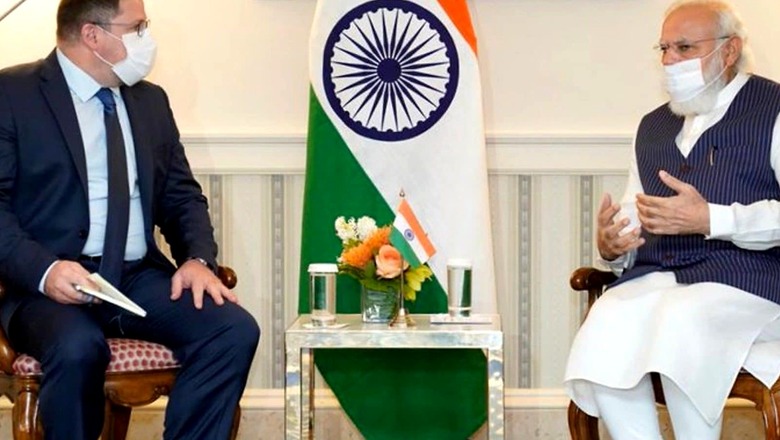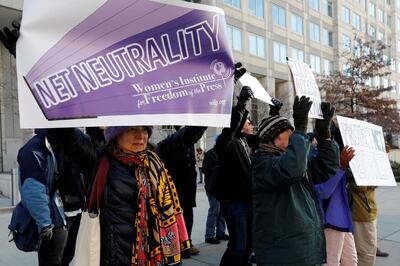
views
The first in-person meeting of the four Quad leaders since President Joe Biden took office in the United States of America concluded last week in Washington. Expectedly, a lot of focus was on the continued efforts to combat the Covid-19 pandemic. But the joint statement released on September 24, after President Biden, Prime Minister Narendra Modi, his Australian counterpart Scott Morrison and Japanese PM Yoshihide Suga met, also stressed the role of science and technology to fight the challenges of the future, especially in telecommunications.
The world is currently reeling under a severe semiconductor shortage. A global supply-demand imbalance of semiconductor was complicated by the pandemic, which led to stockpiling of chips and manufacturing equipment by companies which anticipated supply chain disruptions. An increased demand for work-from-home electronics worsened the crisis, which was further amplified by a global shipping and logistics squeeze. Several industries such as automobile and consumer electronics, which depend on chips of various specifications, have been forced to cut production with no end in sight to their misery.
This comes in the wake of existing concerns on security and reliability of telecommunication equipment being deployed on the new 5G networks. The 5G technology will be critical for machine-to-machine communication as a host of consumer and industrial equipment comes online and interacts without human interface. However, several countries including India, have been sceptical of using the Chinese technology to build 5G.
The Quad statement sought to address this chip to computers ‘full stack disruption’ currently playing out around the world, getting into specifics when it came to telecommunications.
The statement outlined that the Quad was ‘advancing the deployment of secure, open, and transparent 5G and beyond-5G networks’. The security, openness and transparency was linked to the critical role of technology in shaping the respect for universal human rights. The use of the term beyond-5G suggests that this collaboration will be ongoing. By most industry estimates, it may take a decade for 5G to achieve global penetration, so ‘beyond-5G’ makes the time horizon fairly broad and open-ended.
The Quad statement further talked about the need of ‘working with a range of partners to foster innovation and promote trustworthy vendors’. Although no company or country was named, each of these phrases had hard-to-miss intent. Firstly, ‘range of partners’ made it clear that the industry cannot be allowed to become an oligarchy in its design, either in commercial or sovereign sense. The members ask for ‘fostering innovation’ pointed towards the requirement of collaborative efforts for constant improvements in an evolving field. The resolve to ‘promote trustworthy vendors’ made it clear that it was incumbent on all interested vendors to bridge the trust deficit on security.
The Quad statement made a mention of ‘approaches such as Open-RAN’. Open Radio Access Network is an incipient area of research, which promotes interoperability between telecommunications equipment. Making hardware and software from different vendors talk to each other to ensure lower costs, better network performance and greater consumer choice is not easy and certainly not palatable for vendors looking to erect walled gardens and commercial monopolies.
That the joint statement went to the level of specifying open standards shows the importance the four leaders are putting on keeping the Internet and telecommunication networks in general secure and free of single-country dominance. In fact, the statement even set a timeline – 2022 – for demonstrating results from this proposed collaboration, stating that ‘we will work together to facilitate public-private cooperation and demonstrate in 2022 the scalability and cybersecurity of open, standards-based technology’.
A tenacious pursuit of new 5G research can be of immense benefit to India. During his visit, PM Modi met Cristiano Amon, the Chief Executive Office of Qualcomm, a leading global semiconductor firm with a big research and development and technology footprint in India. He was one of only five business leaders who met the Prime Minister, stressing the focus India is putting on the semiconductor sector.
On the manufacturing side too, the Quad partners accentuated the need for ‘secure, resilient and diverse supply chains for critical technologies’. This assumes great importance in the light of India’s ongoing Production Linked Incentives program, which expressly aims to boost local production of several electronics and telecommunications equipment.
For better governance, the Quad Principles on Technology Design, Development, Governance will be launched. There will be greater focus on multilateralism with cooperation at the International Telecommunication Union getting an explicit mention. All these pronouncements are solidly in step with India’s long-held views on design of the global world order.
These ideas found immediate resonance in the joint statement released by India and the United States after Prime Minister Modi and President Biden met bilaterally. This statement cited that the two sides ‘looked forward to reviving the High Technology Cooperation Group (HTCG) in early 2022, with the objective of accelerating high technology commerce in key areas’.
In fact, this joint statement had even greater precision and ambition than the Quad statement. The two sides resolved to ‘expand their partnership in new domains and many areas of critical and emerging technology — space, cyber, health security, semiconductors, AI, 5G, 6G and future generation telecommunications technology, and block chain, that will define innovation processes, and the economic and security landscape of the next century’. All these areas of mutual interest will require heavy focus on telecommunication supply chain, research and manufacturing.
In a dynamic global order increasingly shaped and influenced by technology, establishing ground rules on how the telecommunications backbone should evolve is critical. The common aspirations and alignment of the Quad members on this issue makes it abundantly clear that no country can forcefully and unilaterally push its sovereign agenda on the rest of the world.
Apart from making the world more secure, these initiatives in the telecommunications space open a range of possibilities for the Indian industry. Indian businesses stand to gain not just valuable technology know-how but also be front and centre of fostering global technology innovation.
(The views expressed in this article are those of the author and do not represent the stand of this publication.)
Read all the Latest News , Breaking News and Ukraine-Russia War Live Updates here.




















Comments
0 comment